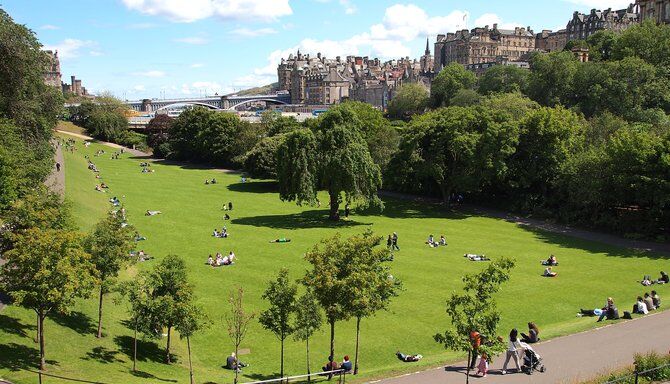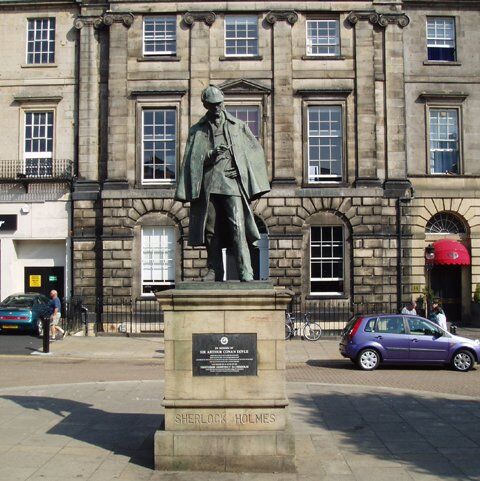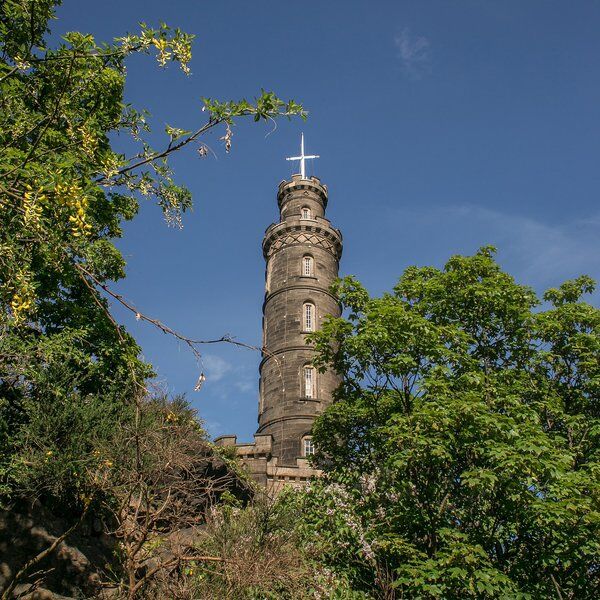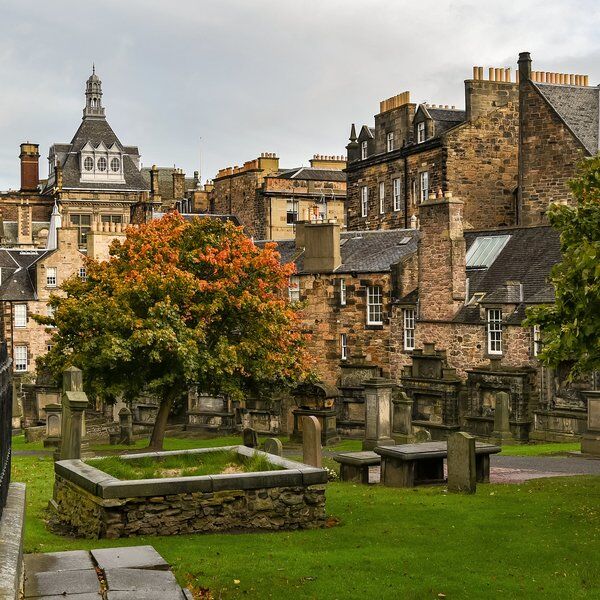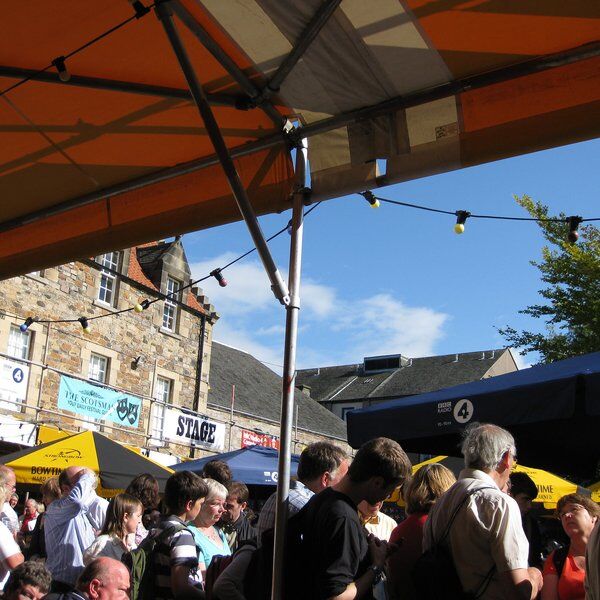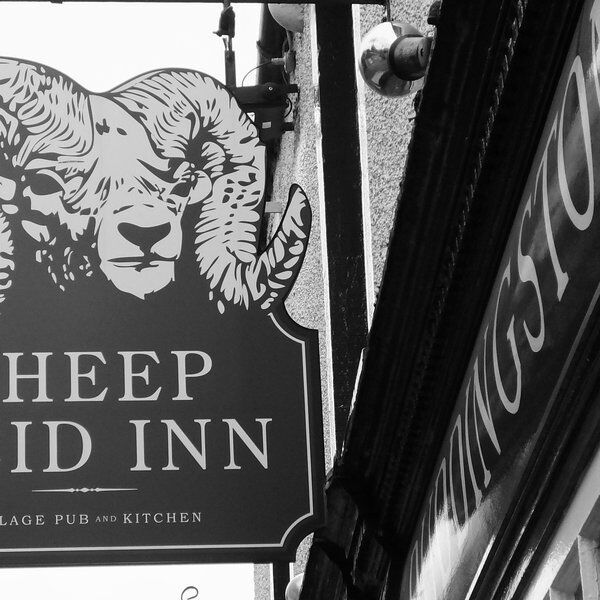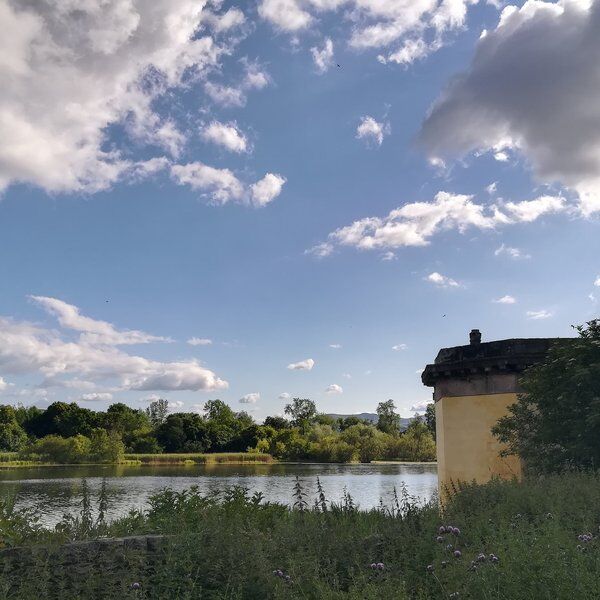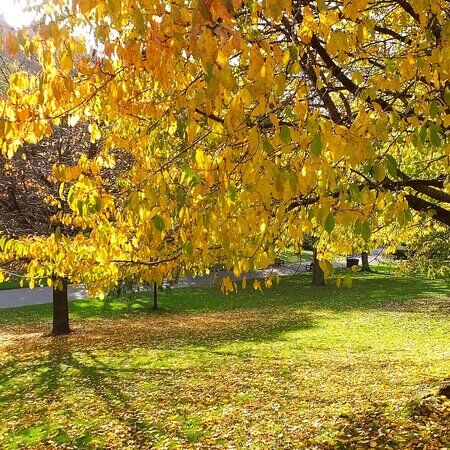
Exploring Edinburgh's Princes Street Gardens
Princes Street Gardens, in Edinburgh’s Old Town, are divided into two sections separated by The Mound, which hosts the iconic National Gallery of Scotland. These sections are named East Princes Street Gardens and West Princes Street Gardens, respectively. The eastern side, spanning approximately 8.5 acres, has long served as a public park, while the larger western end, covering 29 acres, was privately owned until 1876, when it transitioned to a public park under the ownership of the city council. Today, Princes Street Gardens as a whole, are a beautiful green statement at the heart of the capital city.
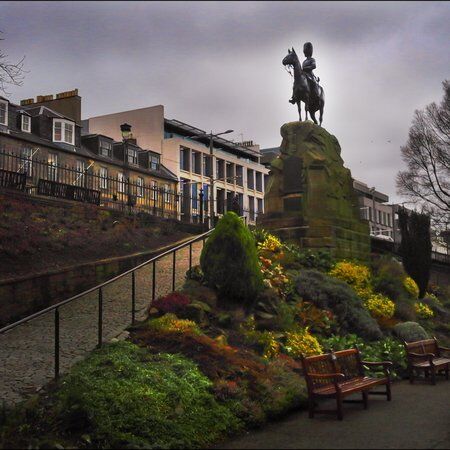
The Nor’ Loch: Origins and Grim History
A far cry from their current appearance, the Princes Street Gardens in Edinburgh originally existed as a stinking marshland known as the Nor’ Loch. Forming the northern boundary of Edinburgh, the Loch acted as a natural defence for the city, fortified further in the fifteenth century by the damming of a nearby stream.
However, the Nor’ Loch doubled as a rubbish bin for the city's waste, becoming a putrid reservoir of filth over the centuries. Human and animal waste, slaughterhouse leftovers, and even corpses were dumped into its murky depths, earning it a fearsome and deeply unpleasant reputation.
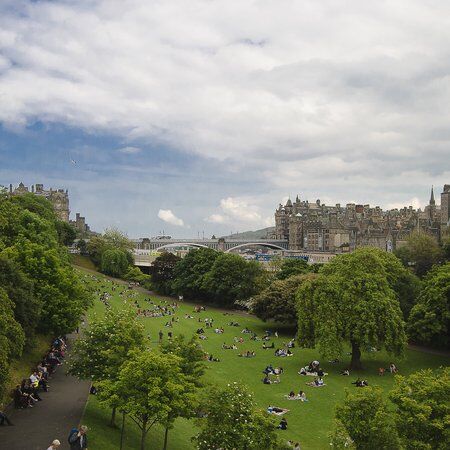
Witchcraft Trials at the Nor' Loch
The Nor’ Loch continued its infamy as a dumping ground as murderers found it a convenient spot to dispose of victims. But continuing on from its close relationship with death, the city used it for official executions, including the infamous practice of "witch dunking".
In the sixteenth century, Edinburgh was synonymous with witchcraft trials. During "witch dunking" suspects were submerged in water to determine guilt—were they or were they not witches? If they survived they were, and if they drowned they weren’t. However, this practice was reportedly abandoned due to the Loch's foul and polluted nature, making it difficult for anything, including people, to sink.
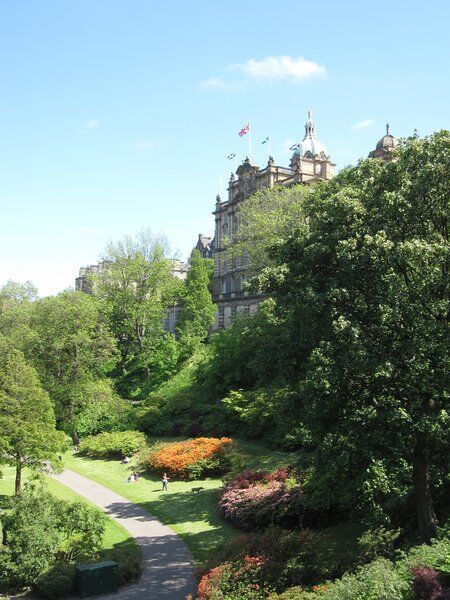
The Nor’ Loch’s Transformation into Princes Street Gardens
With the creation of the New Town in the late 18th century, the Nor' Loch was drained around 1764, to make way for the construction of the North Bridge. This bridge would facilitate the connection of Edinburgh's two halves.
Originating from a dispute between Edinburgh Corporation and the early New Town proprietors, the Princes Street Gardens came into existence in 1771 as part of the First New Town development. Inaugurated in 1820, the gardens were created from the drained lake's former bed. In their flourishing state today it is hard to believe that the land was once so stained with grime and bloodshed.
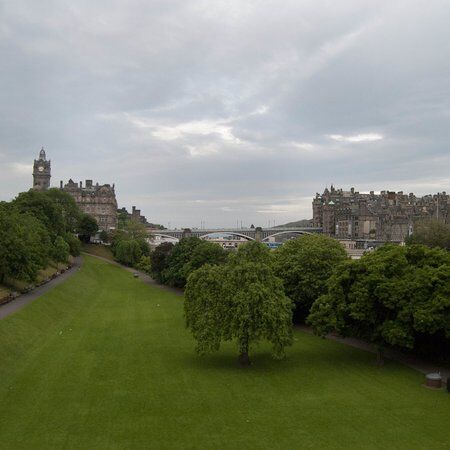
West Princes Street Gardens
Early Beginnings as a Gardens
While East Princes Gardens had long been a public park, after their inauguration, the western part of the Princes Street Gardens belonged to "the Princes Street Proprietors," opening to subscribers in 1821. However, private access came with strict rules—dogs, cricket, perambulators, and smoking was prohibited. Despite these regulations, the gardens gradually evolved into a beloved community spot, with occasional public access granted during festive seasons to deter untoward activities and boisterousness in nearby drinking establishments.
Transformation into a Public Park
In 1876, amidst some resistance from residents, the Edinburgh Town Council reclaimed the western area of the grounds. City architect Robert Morham led the ambitious project. The park's landscape was redesigned; statues along the roads edge and a gardener's cottage were added, and Princes Street was widened, making it steeper but overall improving access to the gardens.
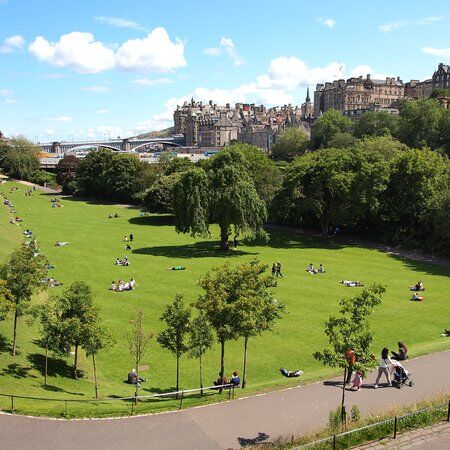
Visiting the Princes Street Gardens
The Mound
The Mound is a prominent feature in Princes Street Gardens. Constructed from the rubble of Edinburgh's New Town between 1780 and 1830, this artificial hill extends from Princes Street towards the Royal Mile. Today, the Mound is home to several institutions, including the Bank of Scotland and the Museum on the Mound.
Scottish National Gallery
The Museum on the Mound, overlooking Princes Street Gardens, is actually the Scottish National Gallery—a museum of neoclassical artworks from Europe and Scotland. Designed by architect William Henry Playfair and officially open since 1859, the gallery holds artwork by the likes of Jan Steen and Johannes Vermeer.
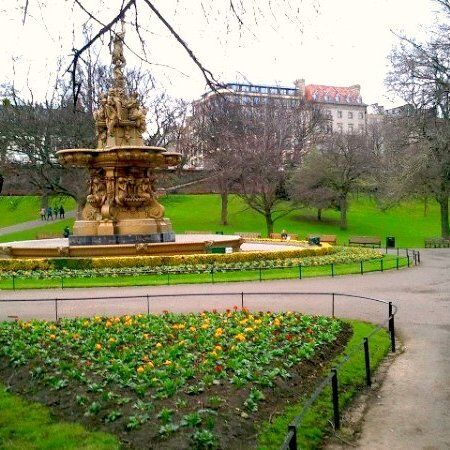
Air Raid Shelters
During World War II, four massive air-raid shelters were constructed within Princes Street Gardens’ northern bank. Designed by Alexander Garden Forgie and dating back to 1950, these shelters provided shelter for Edinburgh's residents during war time. Today, they are listed buildings.
Ross Bandstand and Ross Fountain
At the heart of the West Gardens lies the Ross Bandstand, named after William Henry Ross, Chairman of the Distillers Company Ltd., who gifted the original bandstand in 1877. Over the years, the bandstand has hosted many events, including the Festival Fireworks Concert and Hogmanay celebrations.
Nearby, the Ross Fountain, sculpted by Jean-Baptise Jules Klagmann, was gifted by Edinburgh gunsmith Daniel Ross in 1872. Despite controversy over its depiction of the female form, the fountain remains.

The Scott Monument
In 1840, construction commenced on what would become one of Princes Street Gardens' most iconic features—the Scott Monument. Designed in a neo-Gothic style resembling a "gothic spaceship," the monument honours the Scottish author, Sir Walter Scott. The monument is accompanied by the nearby Waverley Train Station named after Scott's first novel.
Royal Scots Monument
South of the gardener's cottage—and not to be confused with the Scott Monument—lies the Royal Scots Monument. This is a modern henge designed by Sir Frank Mears and adorned with sculptures by Pilkington Jackson. Originally erected in 1950 to commemorate the Royal Scots, this monument underwent enhancements in 2007 to include additional Battle Honors.
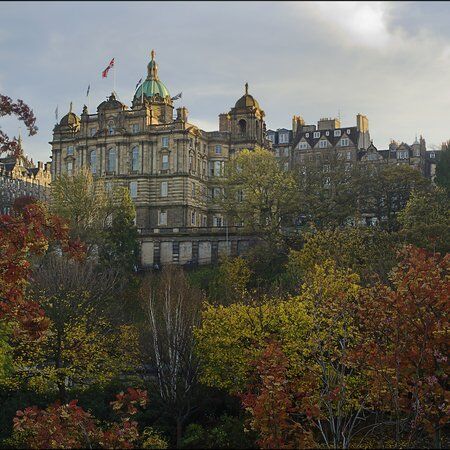
Mortonhall Baby Ashes Memorial
Erected in 2019, the Mortonhall Baby Ashes Memorial, featuring a sculpture of a baby elephant by artist Andy Scott, symbolises the memory of 250 infants and their families affected by the Mortonhall scandal. This was a tragic chapter in Edinburgh's history uncovered in 2012.
Other Statues at Princes Street Gardens
Along the south side of Princes Street, are statues depicting the explorer David Livingstone, publisher Adam Black, and medical pioneer James Young Simpson. Or to hear a magical tale, look out for Wojtek the Soldier Bear and read all about his unlikely, yet heroic, story.
Floral Clock
Another beloved feature of Princes Street Gardens is the Floral Clock made up of colourful flowers, which change with the seasons.
Edinburgh's Christmas Celebration
Edinburgh's Christmas Celebration
Above all else, in modern times, Princes Street Gardens has become famous for its Christmas Markets. Each year, the gardens come alive with the sights and sounds of 'Edinburgh's Christmas.' Reminiscent of the winter markets in Germany the stalls are filled with gifts. There’s even a Ferris Wheel and special makeshift bars and huts serving mulled wine, steins, and currywurst. What more could you want?
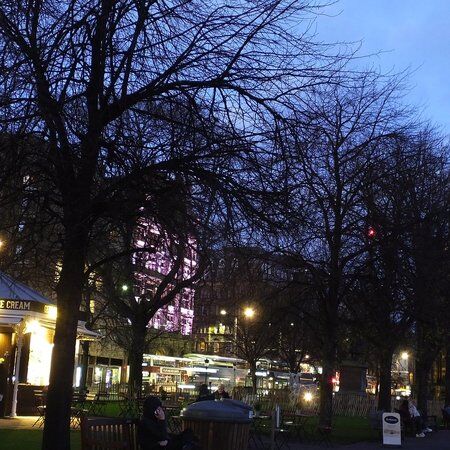
Explore Edinburgh with CityDays
The best way to discover more hidden gems around Edinburgh is to take your time and, ideally, have a pre-planned route that takes you past all the noteworthy nooks and hidden gems.
We can help you there!
CityDays combines the fun of an outdoor treasure hunt with the historic facts and whimsical trivia of a walking tour.
Answer riddles, solve puzzles and learn more about Edinburgh's vast history in a new and interactive way!
Take the stress out of planning your visit to Edinburgh and book your adventure today!
Not visiting Scotland this time? Don’t worry, you’ll find us all over the world.
